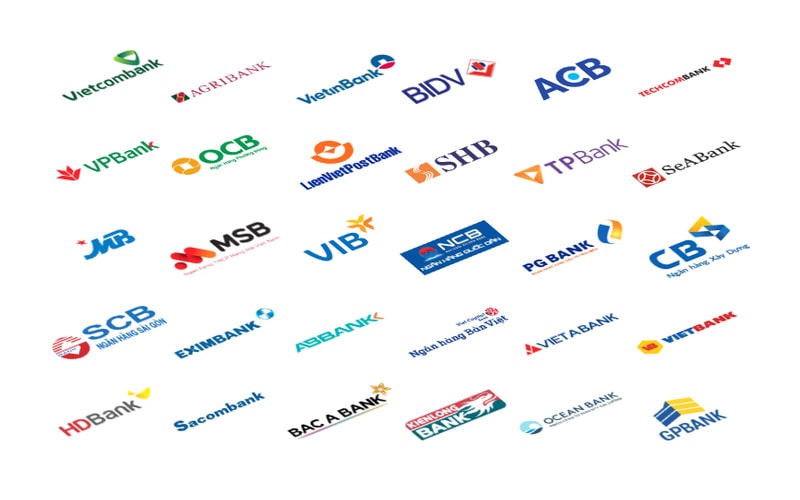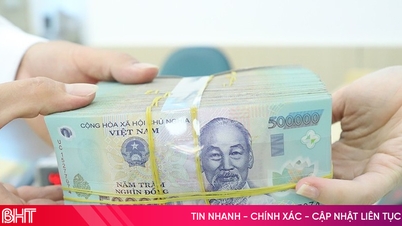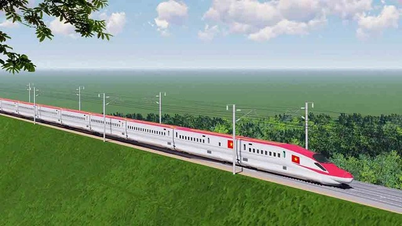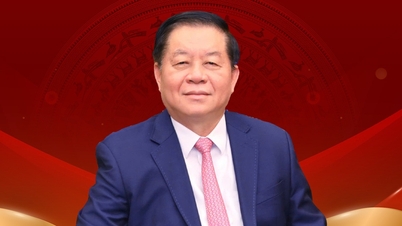Removing the credit room is a strong reform step in monetary management, helping to free up credit resources and unclog capital flows in the economy . However, besides the banks that benefit greatly, there are also many credit institutions that may face challenges if they do not have enough risk management capacity and asset quality is not guaranteed.
Accordingly, in recent years, the State Bank has used the "credit room" tool to control the total amount of money pumped into the economy, ensure macroeconomic stability and control inflation. However, in the context of the Vietnamese economy entering a period of strong restructuring, requiring effective mobilization and allocation of resources, the study of removing the credit room is considered a necessary step, contributing to the liberation of resources and increasing competitiveness in the banking system. Dr. Can Van Luc, a financial expert, said: "Removing the credit room is a big step forward, helping the market mechanism operate more properly. At that time, any bank with good governance capacity and effective risk control will be allowed to increase credit growth according to actual needs."
Dr. Nguyen Tri Hieu warned: “Removing the credit room is necessary, but if it is not accompanied by strong enough supervision and sanctions, systemic risks may increase, especially when some small banks chase profits and loosen risk control.”
Accordingly, the elimination of credit room will have impacts on the market and banking competition. In general, the elimination of credit room can create a strong differentiation between banks, specifically:

Meanwhile, strong banks will become even stronger, because when they are no longer “restrained”, the top banks can expand credit quickly, gain market share, and attract customers better. Meanwhile, weak banks are forced to restructure. And if they do not improve their risk management capacity, increase capital, and reduce bad debt, the weak banks will be gradually “eliminated” by the market. Notably, if the room is removed, banks will have to compete with service quality, technology, and attractive interest rates to attract customers - this will partly benefit borrowers.
Eliminate credit room for benefiting banks
Accordingly, by “untying” the credit room, large, healthy, well-managed banks will have the opportunity to continue to break through because they are no longer “restrained”. In particular, banks with large capitalization, solid financial foundations and high credit quality are considered to be the first to benefit from removing the credit room. Because, when no longer constrained by growth limits, these banks will be able to take full advantage of their capital potential, customer system and network to expand lending.
According to Mr. Nguyen Quang Thuan - Chairman of FiinGroup, "Removing the credit room will be a catalyst to help leading banks such as Vietcombank, BIDV , Vietinbank, VIB, Techcombank, etc. grow more strongly, while also forcing small banks to reform if they want to compete."
Typically, Vietcombank is one of the Big 4 banks and is always in the group with the highest credit room granted every year. With a strong capital base, low bad debt ratio and quality customers, Vietcombank will have more room for credit growth when the mechanism is more open.
Or another bank is Techcombank, known for its strong retail operations and large corporate ecosystems such as Vingroup, Masan... If given autonomy to grow, Techcombank can promote faster capital flow to this ecosystem.
There are also other names such as VIB, HDBank, BIDV: These banks have good financial capacity, a lot of room for credit growth and have well implemented digital transformation and technology application - this is one of the important criteria in credit management scoring.
According to Mr. Nguyen Quoc Hung - General Secretary of the Vietnam Banks Association (VNBA), "If there is no longer an administrative room allocation mechanism, any bank that does well in risk management, has sufficient financial capacity, meets Basel II/III standards, has a low bad debt ratio... can completely proactively increase credit growth, thereby creating a competitive advantage. I highly appreciate banks like Vietcombank, which are units that always adhere to high standards and have good business efficiency."
Big challenges for weak banks, high bad debt, special control, thin customer base
Although the removal of the credit ceiling is considered a big boost for the banking industry, not all banks are ready to enter the game according to the market mechanism. Many experts and institutional investors are concerned that a part of banks that are weak in capital, risk management or are under special supervision will not be able to take advantage of opportunities, even expose more risks, thereby being clustered or forced to restructure.
Accordingly, in the optimistic picture, banks with large capitalization, solid financial foundations and high credit quality are considered to be the first to benefit when the credit room is removed. On the contrary, some banks with weak asset quality, high bad debt ratio, under special control or in the process of restructuring will face difficulties in credit growth when the credit room mechanism is removed.
Mr. Nguyen Duc Trung - VDSC analyst: "When there is no longer a credit room allocated by the State Bank, weak banks will no longer have a 'lifebuoy' whenever they need to expand their outstanding loans. The market will no longer protect them but will force banks to reveal their actual capacity. It is a life-and-death test.", "Banks that are under special supervision or are in the process of restructuring like SCB will continue to have their growth restrained because they themselves do not meet the governance, capital and transparency standards to be trusted by the State Bank."
According to the Investment Director of a foreign fund in Ho Chi Minh City: “Banks like PG Bank, VietABank or SaigonBank are still lacking capital, do not have a clear ecosystem and the level of digital transformation is almost out of the race. If they cannot merge with large banks, I am afraid that they will gradually lose market share.”
Accordingly, removing the credit room does not help these banks grow freely because they are limited by their own financial capacity and high risks. Banks with low capital adequacy ratios (CAR) such as PGBank, VietABank, Nam A Bank, OCB... have CAR ratios approaching the minimum level. At the same time, these banks are closely inspected and monitored for violating regulations. Notably, some banks found to have violated lending standards, cross-ownership, or showing signs of manipulation will be under special supervision and not "free to float" according to market rules.
Mr. Pham Xuan Hoe - Former Deputy Director of the Banking Strategy Institute said: "It is very worrying if there are banks that pursue credit growth at all costs after the room is removed, but lack the capacity to control risks. Among them, many small banks have high real estate lending rates, large potential bad debts and are controlled by a group of manipulative shareholders.", "Banks with abnormally high LDR (credit/mobilization) ratios, low CAR, and have not fully implemented Basel II - should not be licensed to grow strongly even though the room has been removed. They will face difficulties not only from regulations but also from the market and investors."
Accordingly, although removing the credit room is necessary, in order for this policy to be effective and not create consequences, it is necessary to focus on strengthening credit quality monitoring more closely than ever; Strengthening monitoring according to quantitative and public criteria such as bad debt, CAR, LDR coefficient, profitability, risk management capacity... to serve as a basis for inspection, supervision and control. Especially the issue of transparency and limiting manipulation and cross-ownership in credit institutions.
Thus, removing the credit room is a major policy turning point, paving the way for credit institutions to operate according to market mechanisms. However, only truly healthy banks with good financial and governance foundations can take advantage of this opportunity to break through. On the contrary, weak banks will face pressure to reform, improve their capacity or merge and consolidate if they want to survive./.
Source: https://baolamdong.vn/bo-room-tin-dung-co-hoi-va-thach-thuc-song-hanh-doi-voi-cac-ngan-hang-381970.html


![[Photo] Ca Mau "struggling" to cope with the highest tide of the year, forecast to exceed alert level 3](https://vphoto.vietnam.vn/thumb/1200x675/vietnam/resource/IMAGE/2025/11/04/1762235371445_ndo_br_trieu-cuong-2-6486-jpg.webp)

![[Photo] Panorama of the Patriotic Emulation Congress of Nhan Dan Newspaper for the period 2025-2030](https://vphoto.vietnam.vn/thumb/1200x675/vietnam/resource/IMAGE/2025/11/04/1762252775462_ndo_br_dhthiduayeuncbaond-6125-jpg.webp)
![[Photo] Ho Chi Minh City Youth Take Action for a Cleaner Environment](https://vphoto.vietnam.vn/thumb/1200x675/vietnam/resource/IMAGE/2025/11/04/1762233574890_550816358-1108586934787014-6430522970717297480-n-1-jpg.webp)

![[Photo] The road connecting Dong Nai with Ho Chi Minh City is still unfinished after 5 years of construction.](https://vphoto.vietnam.vn/thumb/1200x675/vietnam/resource/IMAGE/2025/11/04/1762241675985_ndo_br_dji-20251104104418-0635-d-resize-1295-jpg.webp)
































































































Comment (0)